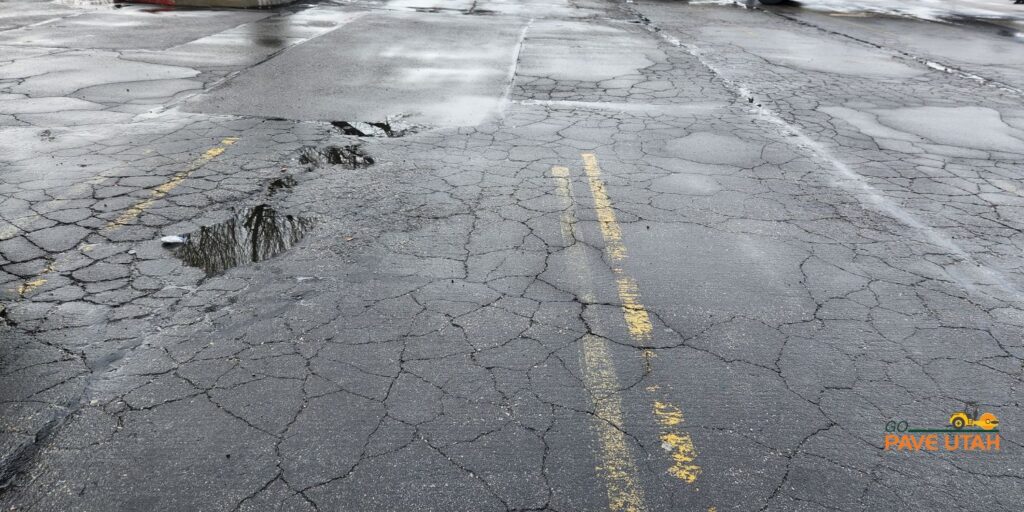
When you think about pavement damage, you probably picture potholes, cracking, or surface wear from traffic and UV exposure. But the most destructive force to your asphalt or concrete might be one you’re not watching closely enough: water. Improper drainage can quietly erode the structure beneath your paved surfaces, leading to costly repairs that go far beyond cosmetics. For commercial property owners and managers in Utah, where seasonal storms and irrigation runoff are part of the landscape, drainage should be a top priority in your pavement maintenance plan.
Even small amounts of standing water on your lot or drive lanes can signal deeper issues. Over time, water that doesn’t drain properly begins to seep through surface cracks or aggregate joints, weakening the subgrade layer beneath. Once the base material is compromised, it loses its ability to support the pavement above it. The result is sagging, rutting, soft spots, or accelerated cracking—even if the surface looks fine today. That’s why drainage problems don’t always show up immediately. You often notice them only after the damage is done.
If your pavement isn’t pitched correctly or your drains are poorly placed, water won’t move off the surface fast enough. And in Utah’s hot-cold climate, any trapped moisture can freeze and expand in colder months, worsening the problem. Freeze-thaw cycles combined with subgrade erosion are a recipe for premature failure.
When drainage is overlooked, repairs become more frequent and more expensive. Sealcoating wears out faster. Cracks return shortly after filling. And pothole patching becomes a recurring line item instead of a seasonal necessity. Over time, these minor issues snowball into major rehab projects—or even full replacement.
What makes it worse is that drainage-related damage often isn’t covered by general surface maintenance. If you’re simply reacting to surface wear without evaluating how water moves through your site, you’re missing the root cause of the problem. That means your maintenance dollars aren’t stretching as far as they could.
Pooling water, sinking spots near curbs, and hairline cracks that seem to reappear after sealing are all signs that water may be undermining your pavement. If you manage a commercial lot, loading dock, or multi-use access lane, drainage should be part of every annual pavement review. Ignoring it could leave you dealing with instability right when you need your surfaces most—during high traffic, winter weather, or property turnover.
This is where working with a professional team like Go Pave Utah makes a difference. They don’t just fix the visible damage. They evaluate the entire system, from slope and grading to drainage placement and subgrade stability. Their experience working with Utah properties means they know how to spot—and stop—issues before they become liabilities.
Water might not leave tire marks or raise tenant complaints immediately, but its long-term impact is undeniable. The best way to extend the life of your pavement is to deal with drainage before it becomes a repair issue. Go Pave Utah can help you plan, maintain, and future-proof your pavement by integrating drainage solutions into your overall maintenance strategy.
The surface might look fine now—but is water quietly working against it?